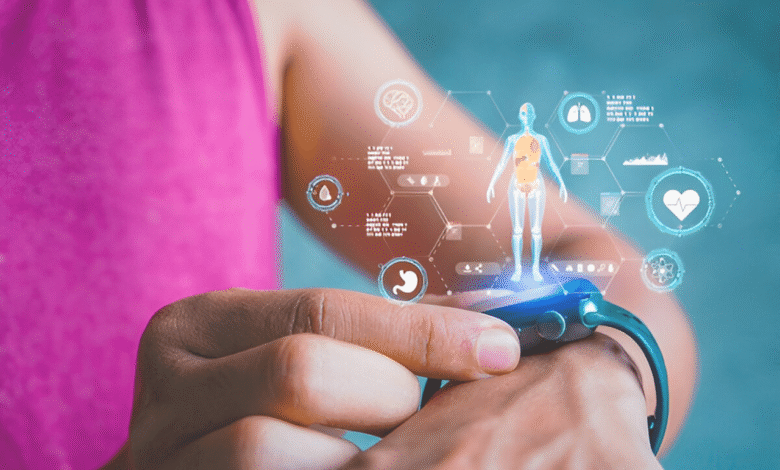How Wearable Tech is Revolutionizing Fitness Tracking
Wearable tech revolutionizes fitness tracking with real-time health data, AI insight & 24/7 monitoring. Discover how smart devices optimize workout.

Wearable tech has transformed the way we approach health and fitness, making it easier than ever to track and improve our well-being. From smartwatches to advanced fitness bands, these devices provide real-time insights into heart rate, sleep quality, calories burned, and activity levels, empowering users to make data-driven decisions. As technology continues to evolve, wearable fitness trackers are becoming more sophisticated, offering features like GPS tracking, stress monitoring, and even ECG readings. This revolution in fitness tracking is not just for athletes it’s helping everyday individuals stay accountable and motivated in their health journeys.
The rise of wearable technology has also bridged the gap between fitness and healthcare, with devices now capable of detecting potential health risks such as irregular heart rhythms or low blood oxygen levels. Unlike traditional methods, which rely on manual logging or occasional check-ups, wearable tech provides continuous, personalized feedback. Whether you’re training for a marathon or simply trying to stay active, these devices offer a seamless way to monitor progress, set goals, and stay connected to your health 24/7. The future of fitness tracking is here and it’s wearable.
How Wearable Tech is Revolutionizing Fitness Tracking
The Evolution of Wearable Fitness Technology
The journey of Wearable Tech began with simple pedometers that counted steps. Today, they have evolved into sophisticated devices capable of monitoring heart rate variability, blood oxygen levels, and even ECG readings. Companies like Fitbit, Apple, and Garmin have pioneered advancements in wearable tech, making it more accessible and feature-rich. Early models focused on basic metrics, but modern devices now incorporate AI-driven insights and GPS tracking. This evolution has made fitness wearables indispensable for athletes and casual users alike. The integration of machine learning allows these devices to provide personalized recommendations, enhancing the overall fitness experience.
Key Features of Modern Wearable Fitness Devices
One of the biggest advantages of wearable fitness tech is its ability to track multiple health parameters simultaneously. Heart rate monitoring ensures users exercise within optimal zones, while sleep tracking helps improve recovery. Many devices also include stress tracking, using HRV (Heart Rate Variability) to assess mental well-being. Another game-changing feature is GPS integration, which allows runners and cyclists to map their routes accurately. Additionally, smart notifications keep users connected without needing their phones. Waterproof designs have also made fitness wearables suitable for swimmers, further expanding their usability.
How Wearable Tech Enhances Fitness Motivation
Staying motivated is one of the biggest challenges in fitness journeys. Wearable devices tackle this by offering goal-setting features, reminders, and achievement badges. Gamification elements, such as step challenges and virtual rewards, make workouts more engaging. Many fitness trackers sync with apps like Strava and MyFitnessPal, creating a comprehensive health ecosystem. Social sharing options allow users to compete with friends, fostering a sense of community. This blend of technology and psychology keeps users committed to their fitness goals.
Wearable Tech for Medical and Preventive Health
Beyond fitness, wearable devices are playing a crucial role in preventive healthcare. Devices like the Apple Watch can detect irregular heart rhythms and even alert users to seek medical attention. Continuous glucose monitoring is another breakthrough, helping diabetics manage their condition effectively. Hospitals and clinics are also adopting wearable tech for remote patient monitoring. This reduces hospital visits and allows doctors to track patients’ vital signs in real time. As technology advances, we may see more FDA-approved wearables for diagnosing and managing chronic conditions.
The Role of AI and Big Data in Fitness Tracking
Artificial intelligence has taken wearable fitness tech to the next level. By analyzing vast amounts of data, AI algorithms provide customized workout plans and recovery tips. For example, some devices suggest rest days based on activity levels and sleep quality. Big Data also helps researchers identify health trends and improve fitness algorithms. Companies use this information to refine their products, ensuring better accuracy and user satisfaction. The future of wearable tech lies in predictive analytics, where devices could warn users of potential health risks before symptoms appear.
Challenges and Limitations of Wearable Fitness Tech
Despite their benefits, wearable fitness devices face challenges. Battery life remains a concern, with some devices requiring daily charging. Accuracy can also vary, especially with heart rate monitoring during high-intensity workouts. Privacy is another issue, as these devices collect sensitive health data. Users must trust manufacturers to secure their information from breaches. Additionally, the high cost of premium wearable tech can be a barrier for some consumers.
The Future of Wearable Fitness Technology
Smarter Health Monitoring with AI Integration
Future wearable fitness tech will leverage advanced AI algorithms to provide hyper-personalized health insights. These devices will analyze sleep patterns, stress levels, and recovery metrics to recommend optimized workout routines. Expect real-time coaching that adapts to your physiological responses during exercise.
Non-Invasive Blood Glucose
Next-gen wearables may incorporate optical sensors to monitor blood sugar levels without finger pricks. Continuous blood pressure tracking could become standard, helping users manage hypertension. This breakthrough would be transformative for diabetics and heart patients.
Self-Charging
Innovations like kinetic energy harvesting will enable devices to recharge through body movement. Solar-powered smart fabrics and improved battery efficiency could eliminate daily charging. Future wearables might last weeks between charges while maintaining full functionality.
Smart Clothing
E-textiles with woven sensors will track muscle activity, posture, and breathing patterns. These garments will provide full-body analytics beyond wrist-based devices. Expect temperature-regulating fabrics that enhance performance in extreme conditions.
Augmented Reality (AR) Fitness Experiences
AR glasses paired with wearables will overlay real-time stats like heart rate zones and form corrections during workouts. Virtual trainers could project holographic instructions for perfect technique. This integration will create immersive, gamified training environments.
Predictive Health
Advanced algorithms will detect potential injuries or illnesses before symptoms appear. Your device might warn about overtraining risks or suggest medical checkups based on trends. This shift from tracking to preventive healthcare could save lives.
Seamless Integration with Smart Ecosystems
Future wearables will automatically sync with smart homes, gym equipment, and electric vehicles. Your fridge might suggest meals based on workout data, while your car adjusts climate control using stress level readings. True interconnected health ecosystems will emerge.
Mental Health Tracking
New sensors may measure cortisol levels and brain waves to assess mental states. Devices could recommend meditation or breathing exercises when detecting anxiety. This holistic approach bridges physical and mental wellness tracking.
Read More: Top 5 Smart Health Gadgets You Should Own in 2025
Conclusion
Wearable technology has undeniably transformed the way we approach fitness tracking. From basic step counting to advanced health monitoring, these devices provide invaluable insights that help users lead healthier lives. The combination of AI, Big Data, and user-friendly designs has made fitness wearables a staple in modern health management. As technology continues to evolve, we can expect even more innovative features that further bridge the gap between fitness and healthcare.
The future holds immense potential for wearable tech, with possibilities ranging from predictive health analytics to seamless integration with smart home systems. While challenges like battery life and data privacy remain, ongoing advancements are addressing these concerns. For anyone serious about fitness and health, investing in a reliable wearable device is a step toward a smarter, healthier lifestyle.
FAQs
How accurate are wearable fitness trackers?
Most wearable fitness devices are reasonably accurate for step counting and heart rate monitoring, but results may vary during intense workouts.
Can wearable tech help with weight loss?
Yes, by tracking calories burned, activity levels, and sleep patterns, wearable devices provide insights that support weight management.
What is the best wearable fitness device for beginners?
Entry-level options like Fitbit Charge or Xiaomi Mi Band offer essential features at an affordable price.
Do fitness trackers work without a smartphone?
Many devices store data internally but require a smartphone for full functionality and data syncing.
Are there privacy risks with wearable fitness tech?
Yes, since these devices collect health data, users should review privacy policies and enable security features to protect their information.











